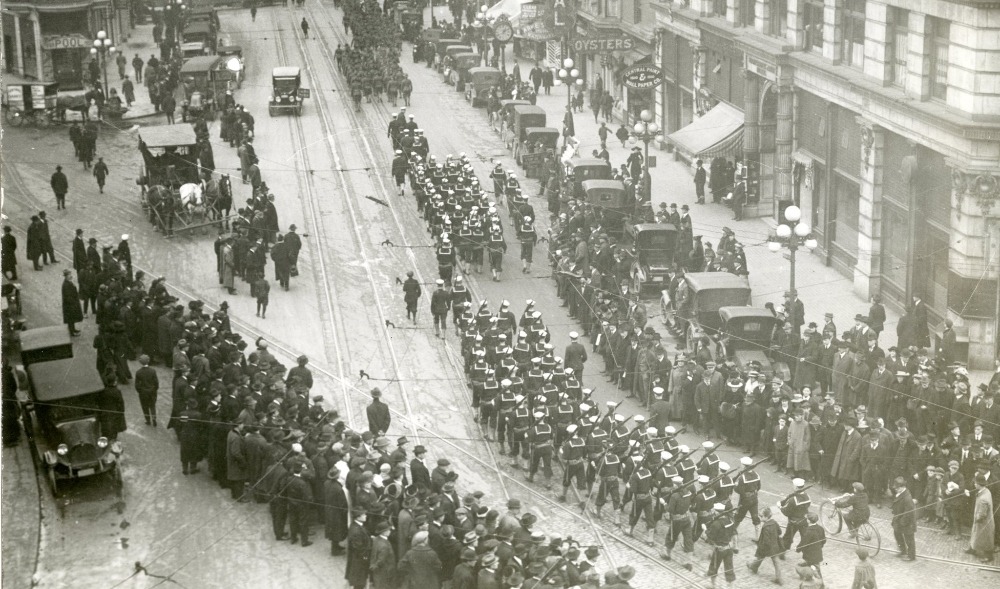My father often reminded me that when war broke out in 1917 (for Americans) he immediately returned to Seattle from Alaska, entered the basement of the ornate and still-standing Pioneer Building at First and Yesler, and signed up. He chose the Engineers, he recalled, because their advertisements promised “immediate overseas service.”
The Puget Sound home front in 1917-1919 was characterized by “war fever,” including patriotic events, parades, farewell parties and jokes about Kaisar Wilhelm. Pierce County voters got national attention when they approved a bond issue to purchase 70,000 acres south of Tacoma which was immediately donated to the U.S. Army, today’s Fort Lewis.
For a brief period Seattle was placed off limits to servicemen. The reason given was alleged prostitution in the Tenderloin District (Pioneer Square). Seattle Mayor Hiram Gill and Chief of Police Warren went through the motions of cleaning up the town to make it an oasis for servicemen. Seattle shipyards boomed, and 40,000 men worked for good wages ($5 a day) in the yards and building a canal from the University of Washington campus to Lake Union. The Navy used the campus to train 6,000 sailors and officers.
World War I posters took pot shots at the “huns” or “heinies” as German soldiers were called. U.S. government posters admonished Puget Sounders to observe meatless Tuesdays, wheatless Wednesdays, porkless Saturdays, and no more than “two medium lumps” of sugar in drinks.
American relief organizations such as the Red Cross, YMCA, YWCA, and Jewish Relief came into their own during this period. My aunt Mary Louise Rochester, under sponsorship of the YMCA, left for France to join her two brothers who were serving in the American armed forces. A pianist and singer, she entertained troops from Paris to Dijon and later wrote a book about her experiences called Nightingale in the Trenches.
While the boys dodged mustard gas in the trenches, Americans at home were being felled by the Spanish Flu epidemic. Gas masks were worn on French battlefields and by citizens at home. Seattle’s “flu ban” was only temporarily lifted when the Armistice was signed.
It was a different world when soldiers returned after the Great War. Although the horrors of war dampened patriotic fervor, Washington state residents like everyone else commenced a decade-long victory party. Some called it the Jazz Age, despite Prohibition. But those heady days set a distinctly different tone.
Discover more from Post Alley
Subscribe to get the latest posts sent to your email.

What a different world we live in now.